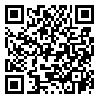Volume 3, Issue 1 (2 2005)
sjsph 2005, 3(1): 61-70 |
Back to browse issues page
Download citation:
BibTeX | RIS | EndNote | Medlars | ProCite | Reference Manager | RefWorks
Send citation to:



BibTeX | RIS | EndNote | Medlars | ProCite | Reference Manager | RefWorks
Send citation to:
Rezaeian M. LARGE SCALE CLUSTERING AND ITS APPLLICTION TO THE HEALTH AND EPIDEMIOLOGICAL STUDIES. sjsph 2005; 3 (1) :61-70
URL: http://sjsph.tums.ac.ir/article-1-246-en.html
URL: http://sjsph.tums.ac.ir/article-1-246-en.html
Abstract: (7821 Views)
Spatial autocorrelation statistics provide summary information about the spatial arrangement of data in a map. In fact, these statistics compare neighboring area values in order to assess the level of large scale clustering. Whenever a large number of neighboring areas have either relatively large or relatively small values, large scale clustering may be detected. Detecting such clustering is a very important issue because failure to take into account the spatial dependency of the data may bias the association between mortality and morbidity rates and their risk factors and erroneously suggest a direct relationship between them. The present article, therefore, explains the two most commonly used spatial autocorrelation statistics for continuous data including morbidity and mortality rates.
| Rights and permissions | |
 |
This work is licensed under a Creative Commons Attribution-NonCommercial 4.0 International License. |





